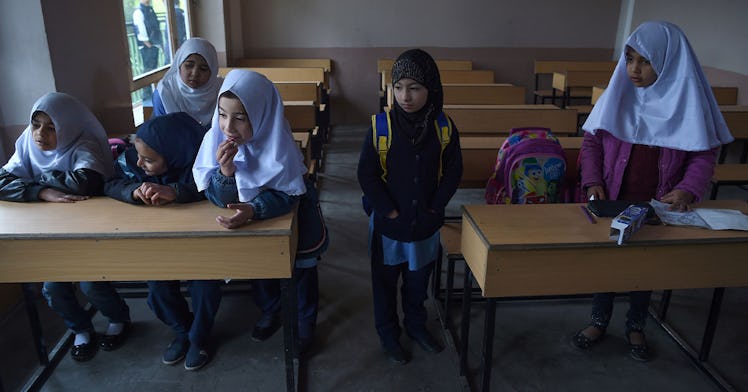Here’s What Girls Around the Globe Really Need to Stay in School
Gender-neutral programs to remove barriers to education and improve pedagogy are as good for girls as programs designed just for them.

Most of the programs designed to help girls thrive in school focus on making sure that there are programs designed specifically for them. But a new study suggests that, in low- and middle-income settings at least, general interventions (that also have benefits for boys) deliver average gains for girls that are comparable to those from programs targeted specifically to them.
The new study published in the World Bank Economic Review is actually a study of studies, a review of 267 different educational interventions in 54 countries. It shows that the two most effective kinds of programs in improving girls’ educational outcomes either “relax household-level constraints” (i.e. scholarships to lower the cost of attending school) or improve teachers’ pedagogy. In other words, they make school cheaper or better, and they make it easier to access for families.
Asked by NPR about particularly effective interventions he found, study co-author David Evans, a senior fellow at the Center for Global Development, cited a Ghanaian program that paid school fees for students who had already passed their secondary school entrance exams that increased the high school graduation rate of girls by 66 percent.
“But the most effective interventions are those that address costs related to specific obstacles that girls face in a particular setting,” Evans continued. “In Afghanistan, for example, a [non-gendered] program built schools in rural communities. It decreased [the cost of] travel to school for both girls and boys and led to a more than 50 percent increase in girls’ participation in primary school. That’s dramatic.”
To be clear, the study isn’t evidence of the ineffectiveness of girl-targeted interventions or an argument to abandon them. Evans rightly points out that many such programs have goals like reducing violence against girls, improving their well-being, or decreasing teenage pregnancy that is worthy but falls outside the scope of their research. It’s simply an endorsement that general investments in education help girls as well.
And lest you worry that general interventions might help boys more—and therefore increase the inequality between the sexes—the research showed that girls were benefited slightly more, though not in a statistically significant way.
“These general, non-targeted interventions are not increasing inequality between boys and girls. If anything, they’re likely to decrease it,” Evans said.
This article was originally published on